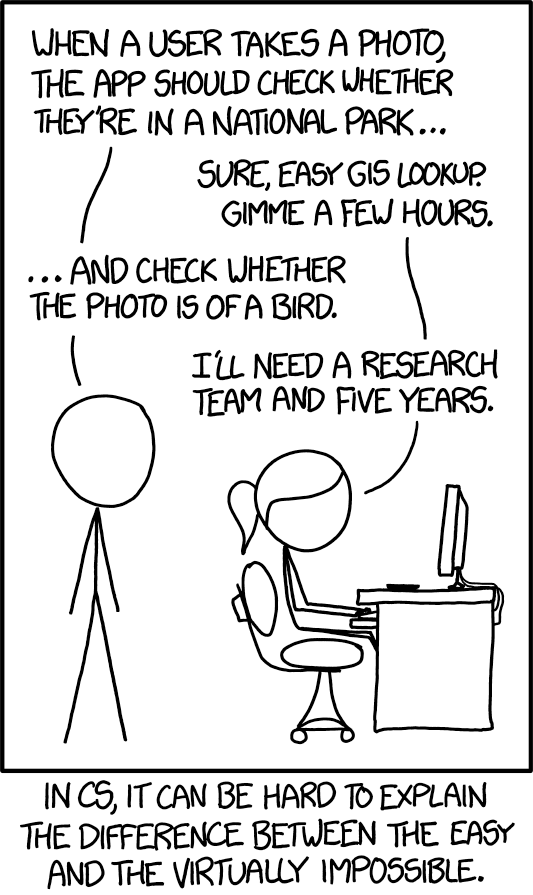
Computers gave us the means, but AI gives us the ends
Jul 2025
If you're a developer from a certain era (i.e. pre-2021), then you've grown-up being indoctrinated into the IT school of thought. You reflexively see every problem you encounter through the lens of relational databases and form submissions.
You might even judge how "technical" someone is by their ability to massage real-world problems into table schemas and imperative logic.
You probably thought this was a funny joke once...

...and for the first 75 years of computing—from 1945 to 2020—it was.
Database lookups were trivial, computer vision was virtually impossible. IT-brained programmers knew this. Ignorant normal people didn't.
But today you can snap a picture on your phone and identify the exact species of bird you just saw, and the best way to know if a picture was taken in a national park isn't to examine its metadata, but to simply ask.
What was virtually impossible became trivial in a hurry.
The basic assumptions we had about how computers work have flipped. The IT-indoctrinated brain has always tried to attack messy real-world problems by surrounding them in a logical ring-fence. They hold onto this notion that computers are tools in the same way that shovels and drills are tools. They're a means to an end. Shovels are a means for making holes in the ground. Drills are means for making holes in the wall.
To really take advantage of what AI can do, developers need to start thinking about software differently— not as the means to but as the ends. Don't deliver tools that allow users to achieve outcomes. Just deliver the outcomes.
Rather than giving users folders, tags, and naming conventions, you can just understand and organize their content.
Rather than asking users to construct state machines and write in DSLs, you can just execute natural-language rules.
Instead of requiring users to learn a templating system and string replacements, you can simply write custom messages en mass.
Don't make drills or shovels, make holes.
© Nan Yu – 2025